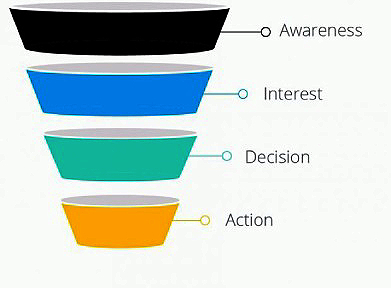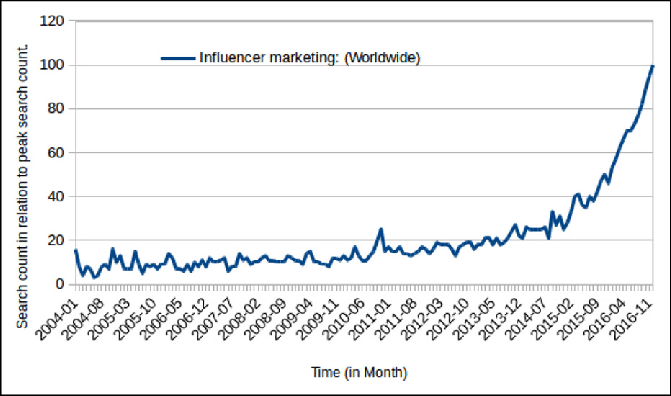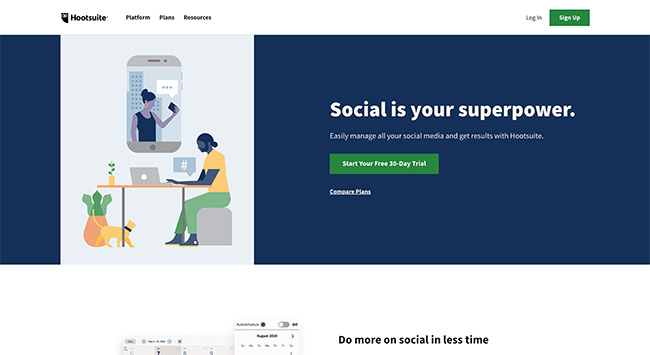
Video aggregators help you organize the vast number of videos in one place. They provide search capabilities, recommendations, billing, and billing. These can be used to locate videos relevant to a topic. Choosing the right one is a personal decision, but there are some general principles to keep in mind when selecting a video aggregator. Below is a comparison list of some of most popular video aggregaters:
Organising large amounts of video content
As SVOD subscriptions continue to rise, the need for an aggregator has become more important than ever. Consumers will need to navigate the huge amount of content that is available with over 1.74 billion video subscriptions globally. There are several types of aggregators, some of which are disruptors like Amazon while others are established players like Pay TV operators. All players agree that aggregation will be essential for the future of video as it provides a single point for billing consumers and economies for providers.
A number of factors impact the need for an aggregater. First, consumers expect personalized video content and convenience. They also want to find content that is tailored to their needs, so streaming services are stepping up their efforts to provide this platform. AVOD aggregators can help these consumers by assembling and packaging short clips that are relevant to their interests.
Producers also have a number of benefits from aggregators. Aggregators can negotiate better deals for platforms and help smaller films find theatrical release. Aggregators can also assist smaller films to find digital distribution opportunities within non-traditional markets. It is important not to confuse film aggregators and video hosting websites. They act as an intermediary between creators & distributors, providing marketing, localisation, and technical support.
Although streaming services are growing in popularity, consumers are not satisfied with their user experience. Consumers will have a harder time finding their favorite content, as more major companies enter the streaming space. Video aggregators can be a great tool to personalize and foster flexibility for consumers. Accenture recently found that people prefer to view their favorite content via one platform over multiple.
Search
As the amount of SVOD subscriptions increases, the need for a video aggregator to make it easier for consumers to find and consume content grows. A survey of subscribers to pay TV found that 62% got frustrated trying to find the content they wanted. Operators have introduced search and recommendation tools to alleviate subscribers' frustrations over the past five years. This space is seeing many approaches.

One of the biggest problems with the streaming video market is the fact that there are hundreds of streaming content providers and their own individual apps, which makes it impossible to find specific viewing content. Intellectsoft developed an app to make it easier by aggregating content from multiple providers and specifying which platforms they are available on. These video aggregators are now widely available and are an excellent resource for finding the content you're looking for.
This model is the most straightforward and most cost-effective, but it is also the most difficult to market. Many video aggregators don’t host their own content and struggle with metadata rights. Instead, some of them resort to scraping methods. The revenue models of video aggregators are also hampered because they often are not willing to include banner ads or revenue sharing. This can prevent them from gaining the popularity they deserve.
News aggregators are a great way to find the most recent news and stories. These tools can also be used to collect videos that are related to a topic. Video aggregators that are most efficient automatically curate videos for users. Google News is an example of this. It automatically curates stories for its users. Google News not only gathers the most recent news but also provides video aggregation and links to other sources.
Recommendations
Video aggregators are a result of the growing popularity of SVOD. Many people are frustrated by the difficulty of finding and accessing SVOD content. A survey has revealed that more that half of pay-TV subscribers find it difficult to find the content they want, a figure that has fallen over the last five. While some aggregators concentrate on being super-aggregators and others have a core market. All of them will play an important role in certain market segments, regardless of their respective focus.
The problem becomes more complicated with more OTT service providers. Each service requires subscribers to navigate multiple services. Additionally, each service has its own payment system and credentials. Video aggregators have to struggle to obtain metadata rights for their content. The revenue models available to these aggregators are usually limited and there is little opportunity for revenue sharing.
Video aggregators can offer many benefits. Many are very easy to use as the bulk of the aggregation process happens automatically. These tools also provide a search engine that will allow you to find streaming services from all sources, which reduces the amount of friction involved with many websites. They are also more affordable for consumers. Here are the top video-aggregators:
Indie films cannot be released without the help of film aggregators. These platforms may make it easier to distribute your films on major VOD or iTunes. While there have been some scammers masquerading as legitimate video aggregators online, there are still some advantages for filmmakers. One, they can help them improve their skills and target younger audiences.
Billing

The number of SVOD subscribers will increase as the global SVOD market expands. Consumers will need assistance finding the content they desire, as there are nearly 1.74 billion subscribers worldwide. Many roles are available for bill-paying video aggregators. Some are aggregators only and others provide services to an established industry like Pay TV operators. They all have important roles in specific segments. These are the most in-demand.
The first model is the easiest to implement, but the most challenging. Many video aggregators don’t own their content and have difficulty obtaining metadata rights from content suppliers. Some resort to scraping. Another major challenge with aggregation revenue models is that the services may not be interested in displaying banner advertisements or participating in revenue-sharing. The latter two revenue models have several advantages.
Billing video aggregators are also able to assist consumers with multiple subscriptions. Although subscribers will have greater access to video content from one source, this doesn't mean they will find what they are looking for easier. Recent research found that 62% (of the subscribers to pay television) often feel frustrated when trying to find what they want. Aggregation services are intended to help solve this problem. Aggregation services make it easier to manage multiple subscriptions, improve account management, and recommend content.
Aggregation fees vary widely. They are usually around $1K for a feature-length film. Other fees may be lower. Some aggregators offer revenue-sharing models, which reduce upfront fees. Others may offer discounted rates on Compressor and other assets. Others may offer Compressor users discounts and create assets for them. These costs could be more expensive than the benefits offered by the platform. How can I determine which platform will be best for me?
FAQ
Is My Website Located Where?
Your website should be located at the top of the search results. This means that your website should appear near the top in every search result. Some searches might have hundreds of pages. How does your website stand up against these competitors?
What is On-Page SEO?
On-page SEO refers to the actions you take within your website to help it rank higher in search engines. Things such as site architecture, page titles, meta tags, and image alt text are all part of on-page SEO. Off-page SEO is activities that are not related to your website and will help improve its rankings. These include backlinks, social media shares, press releases, and more.
How can I get started with SEO for my site?
The first step towards getting a Google ranking is understanding what they are looking for when someone searches for your company name or products on search engines like google. This guide will assist you in writing content that Google ranks high. Also, check out our content marketing guides.
To get started, you need to create a plan. Then think about which keywords you want. There are two types, broad keywords (like "digital Marketing") and specific keywords (like "seo".
The next step is to determine your goals, which could be increasing brand awareness, driving leads or sales.
Once you have defined your goals, it's time to begin writing content. Here are some SEO tips.
Once you've written your content, it's time for it to be published to your blog or website. If you have a website, this might involve updating existing pages. If you do not have a website you can hire a web designer to create one.
Link to your content on blogs and other relevant websites once you've published it. This will make your content more visible and increase its exposure.
Where do I get my keywords from?
You'll need to consider what kind of products or services you offer and who your ideal customer is, and then look for standard terms related to those things. Once you have your list, you can use Google Keyword Planner and other search engines, such as Yahoo! or DuckDuckGo to determine what phrases people are looking for.
How Long does it take for PPC Advertising results to show up?
Paid search results take longer than organic search results because there is no natural flow to them. A person searches for something and expects to see the most relevant results first. Paid search results have to be more convincing to convince people to spend money on advertising on their site.
Do I hire an agency or do it myself?
Hiring an agency can help you get started. First, many agencies provide packages that include everything needed to get started. They also provide training, so you can be sure you understand the process before you hire them. They can also handle any tasks required to rank your site higher.
Statistics
- If two people in 10 clicks go to your site as a result, that is a 20% CTR. (semrush.com)
- A 62.60% organic traffic boost to that page: (backlinko.com)
- 64% of marketers actively create SEO campaigns because they help hit multiple key performance indicators (KPIs), including increasing traffic, helping your site rank for relevant keywords, improving your conversion rate, and much more. (semrush.com)
- Sean isn't alone… Blogger James Pearson recently axed hundreds of blog posts from his site… and his organic traffic increased by 30%: (backlinko.com)
- Which led to a 70.43% boost in search engine traffic compared to the old version of the post: (backlinko.com)
External Links
How To
How to create a successful SEO campaign
You have to know how to stand out from the crowd if you are doing creative writing.
You'll find that most writers are very similar. When they write, they tend to follow the same pattern. They repeat themselves, and they fall back on cliches.
You need to get out of your ruts and create new ideas. Thinking outside the box is key.
You should also look for interesting ways to make writing more interesting. When writing for an audience, you must consider what makes them tick. What is it that makes them smile? What makes them laugh? What makes them weep?
What excites and scares them? What scares you?
When you sit down and write, ask yourself these questions. Ask yourself why you think someone would care about your words. Why would anyone read your words?
Once you've figured that out, it's time to start crafting your story.
Start with your hook. Your opening sentence is vital. It is your first impression on readers. Make wise choices.
Next, decide whether or not your piece will be informative. Informational pieces explain facts. Persuasive pieces encourage readers to agree.
Next, decide whether you will tell stories or provide examples. Stories are fascinating. Examples are a great way to see how something works.